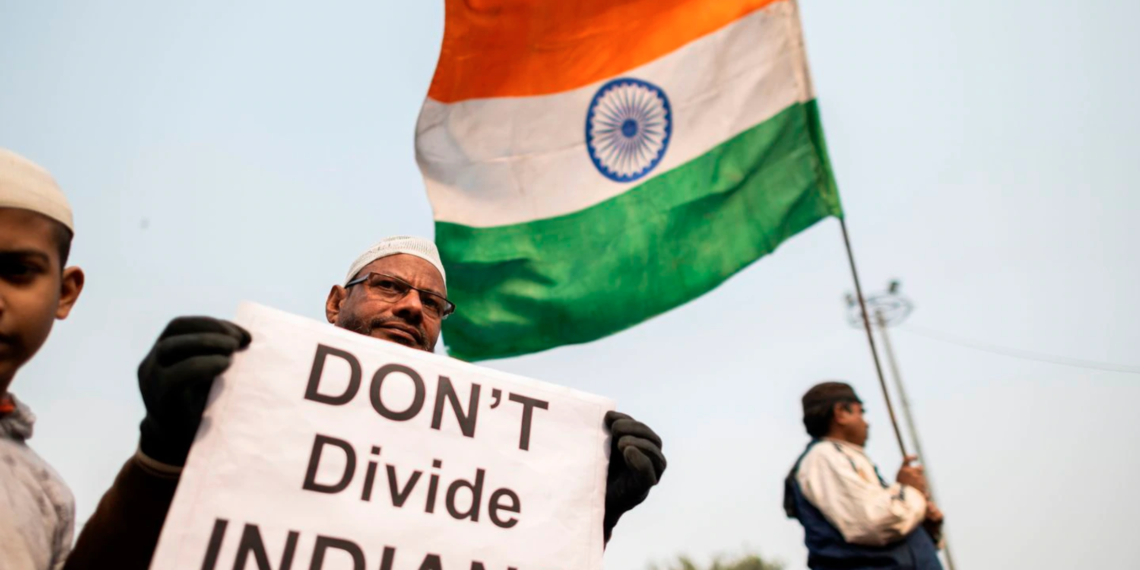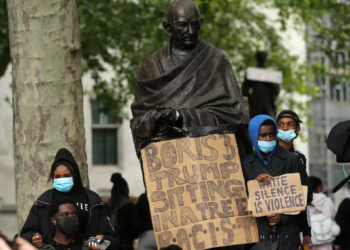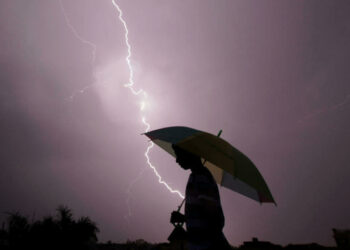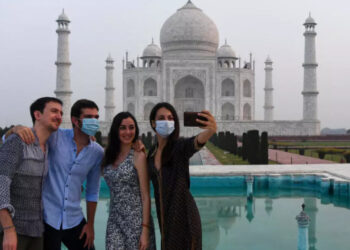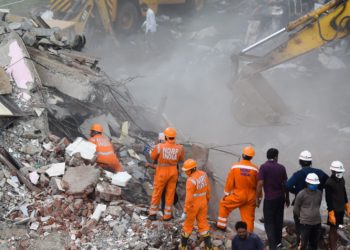Last week, a gunman in India’s capital New Delhi shot at a group of peaceful protesters demonstrating against the country’s contentious Citizenship Amendment Act. Dozens of police armed to the teeth casually watched while he yelled things like “Yeh lo Azaazi” (here take your freedom) and “Delhi Police Zindabad” (long live Delhi police).
The police watched as the perpetrator brandished his gun at the group, when the protesters and the media recording the event begged for intervention, and when he finally pulled the trigger. They also watched as the student injured in this show of impotent rage climbed over the barricades they had set up to make his way to the hospital.
Only after that man’s bullet hit that student spurting out blood and disbelief, the police escorted the gunman into their jeep and arrested him.
Some might look at this and comment on the inefficiency of the Indian police, but that would be unfair. The police are, eerily so, very efficient at what they are doing. They are acting as the state’s tool to give a very specific message to the nation: we will protect you as long as you submit to our idea of India, an India in which only some will enjoy the patronage of the state.
Harsh Retaliation Against Protestors
Sadly, the university shooting of last week is not an isolated incident. Just over a month ago, the Delhi police entered the same university, pulling protesting students from under library tables, injuring over 100 of them, and traumatizing many more for years to come. What then seemed unbelievable, in the following weeks got repeated in other universities, at different protest sites, and in other states.
Since protests against the Citizenship Amendment Act began in December, at least 25 people have been killed. Videos have surfaced of women protecting unarmed men from the police’s batons and boots, and images were spread on social media showing the police questioning 4th-graders over their alleged participation in a play that portrayed Prime Minister Narendra Modi “in poor light.”
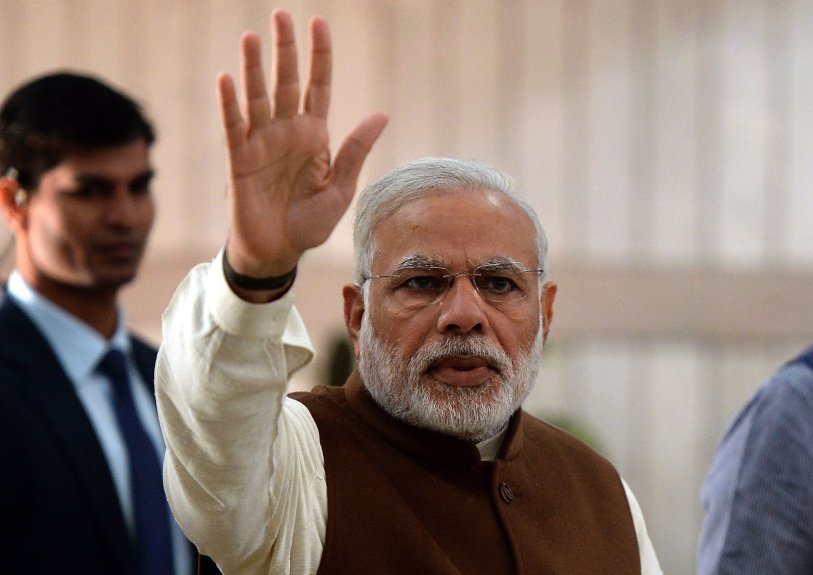
Indians across the country are calling friends and family to make sure they return home safely. They are sending out SOS messages for medical and food aid in the indefinite sit-ins that have sprung up in all of India’s corners. The sit-in participants take turns sharing food, songs, hope, poetry, slogans, and energy in between their homework, jobs, classes, and errands.
These participants, unwittingly, are challenging the very idea of India that the ruling party is trying to project.
With its superb diversity and inclusivity, the spontaneous nation-wide protests are filling the streets with Indians of all classes, castes, and genders. They draw Indians speaking different tongues, with different educational backgrounds, different privileges, and even different political leanings, challenging the government’s narrow idea of India.
These protests are no longer just about one law or one policy. They have evolved into nothing short of a demonstration of the multitude that India is capable of and that the BJP Hindu nationalist government is determined to throttle.
Modi’s India
This has become painfully evident over the last year. In August, a district court in the northern state of Rajasthan acquitted the men who had lynched 55-year-old Pehlu Khan, one of the dozens who have died in the cow vigilante violence that has rocked India since Modi’s administration came to power in 2014. The men were released, even though footage of the murder continues to be circulated and watched online.
Still earlier in the year, in another state, another group of murderers of another Muslim enjoyed front-row seats in the election rally of the state’s chief minister. This same minister has in the last few weeks given his state’s police full reign to detain, injure, and kill Muslims who participate in the anti-Citizenship Amendment Act protests.
Nothing inspires me more than expressions of interfaith solidarity. Here, Hindus and Sikhs form a human chain, so that that their Muslim brothers can pray during protests against India's anti-Muslim #CitizenshipAmendmentAct. pic.twitter.com/VdUbGccYed
— CJ Werleman (@cjwerleman) December 19, 2019
More recently, the Supreme Court released on bail fourteen of the convicts charged with burning alive 33 Muslims during the 2002 state-sanctioned pogrom in Gujarat, in which thousands of Muslims were killed, brutalized, raped, and burned while hundreds of thousands others were displaced.
The convicts were ordered to do spiritual and social service. And the chief minister who oversaw the 2002 massacre in Gujarat is now India’s prime minister. What are they trying to tell us? Whose lives are worth protecting, and whose are not?
With every subtle and not so subtle celebration and sheltering of the murderers of Muslims and of those who dare to think and resist, the government is telling us who is safe and who will never be in this country.
Nation Rises Up
The message couldn’t be clearer: the government and police are here to serve the state first and citizens second, and only some of the citizens. When the leaders pledge that the Citizenship Amendment Act will not affect citizens, the terrifying subtext of that assurance is that the act will affect only those that don’t fit within the leaders’ limited and intolerant idea of India.
Their idea of India is too narrow to define the country’s brilliant multitude. They want India and its 1.3 billion citizens to be unipolar, unicolored, and monolinguistic, where one religion prevails.
With their different actions, India’s ruling party is telling that only those following certain faith, holding certain political views, wearing certain clothes, and speaking a certain tongue will be tolerated.
Some terror will be celebrated, while those that don’t fit in the ruling elite’s picture of India will be conveniently branded as terrorists. Media that align with the government’s beliefs will be tolerated, and others will be stifled.
But just as the state is showing its astounding failure to serve all its citizens, the nation is rising up to the challenge. With every protest art, protest song, and protest poetry, India is bursting from within, exhibiting the full range of what it is capable of.
Disclaimer: The views and opinions expressed here are those of the author and do not necessarily reflect the editorial position of The Globe Post.

